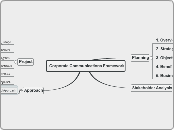Categorising LLS
O'Malley (1985)
Socioeffective
cooperation and questions for clarification
Require planning for learning, thinking about learning process, monitoring of ones production comprehension and evaluating learning after an activity is completed
Repetition, translation, note taking, contextualization, elaboration, etc.
Limited to certain learning task consisting more direct manipulation of learning material
Rubin (1987)
Contribute indirectly towards learning
Activities that expose learners to practise their knowledge
Communication
less directly related to language learning since their focus is on the process of participating in a conversation and getting meaning across or clarifying what the speaker intended.
Oxford (1990)
Indirect
Social
The interaction with other learners to improve language learning and cultural understanding
Affective
Emotions, motivation and attitude towards learning
Metacognitive
Controlling own cognition through the co-ordination of the planning, organisation and evaluation of the learning process
Direct
Compensation
Using context to make up for missing information in reading and writing
Cognitive
Making associations between new and already known information
Memory
Making associations between new and already known information through use of formula, phrase, verse









